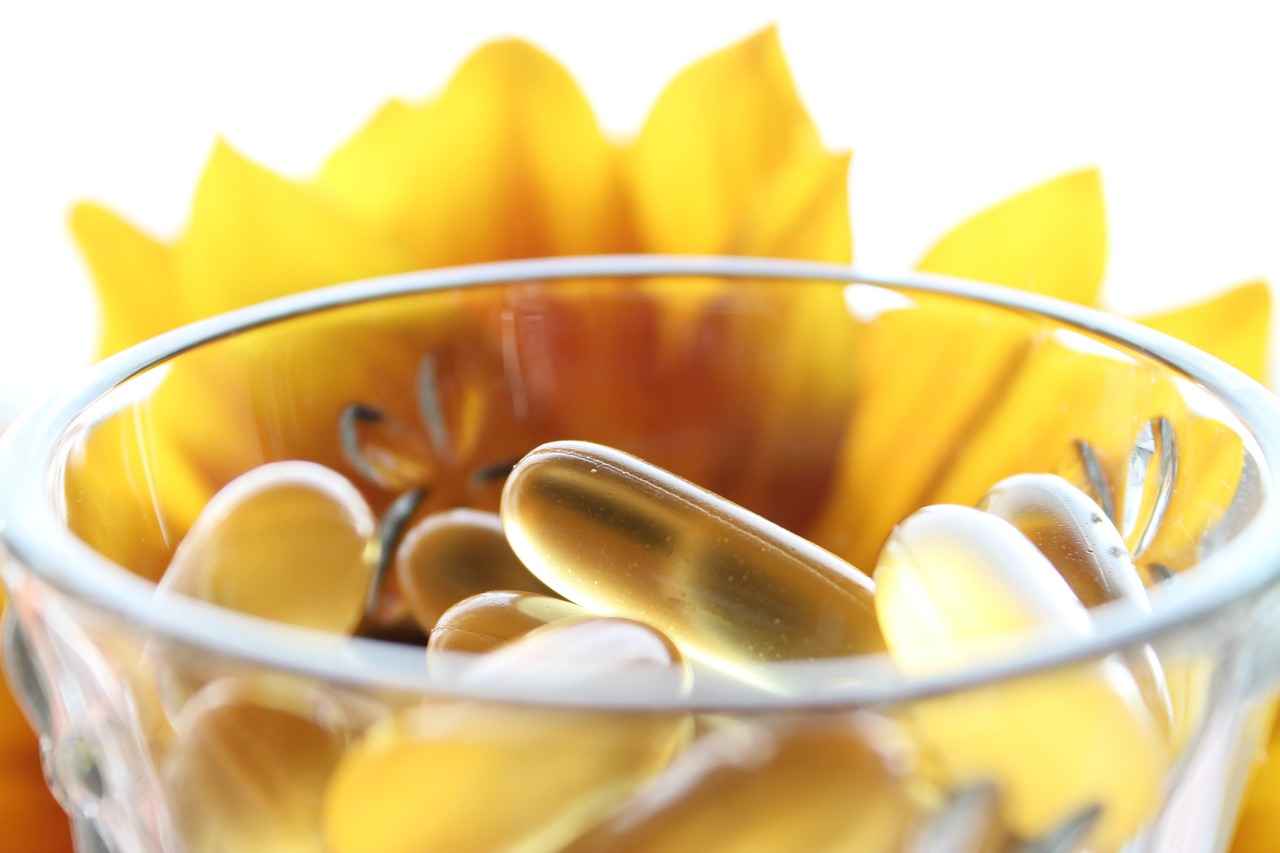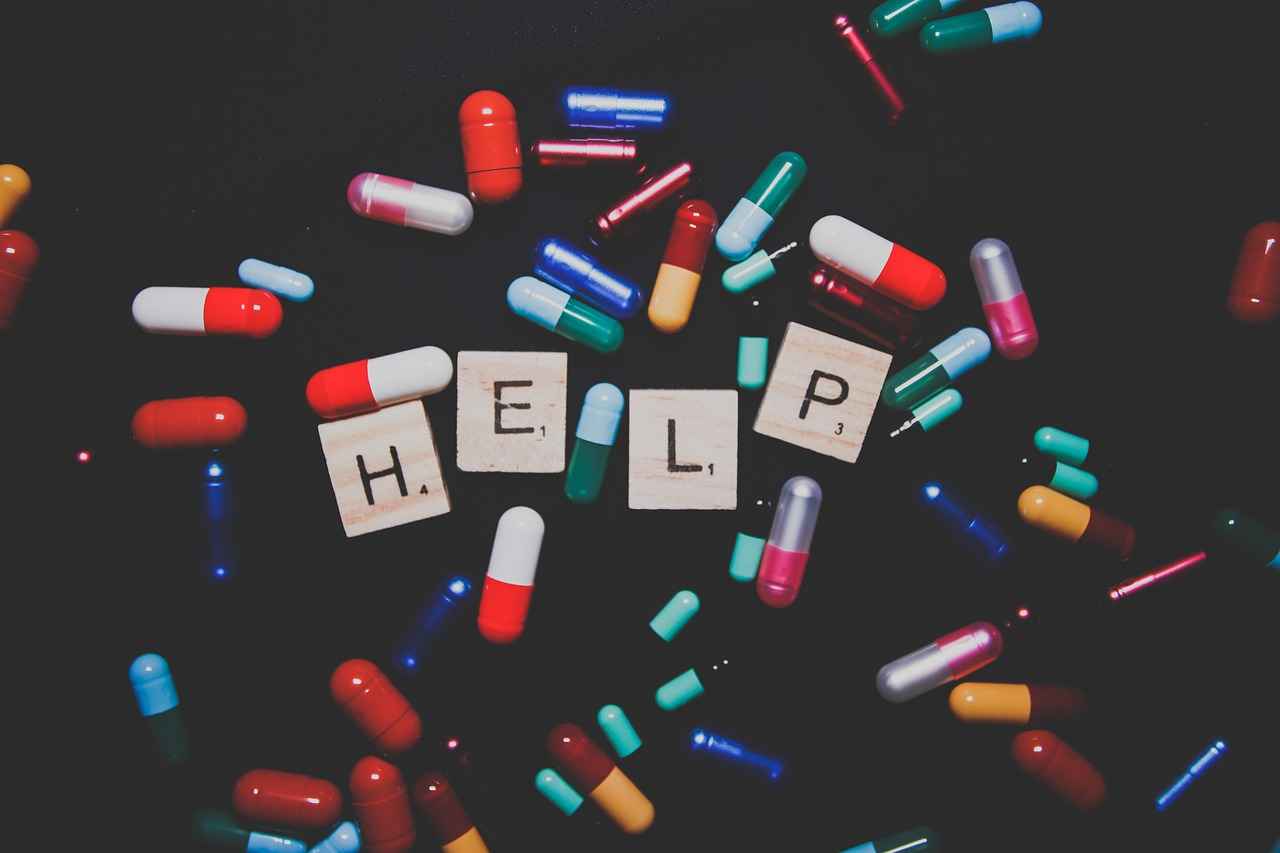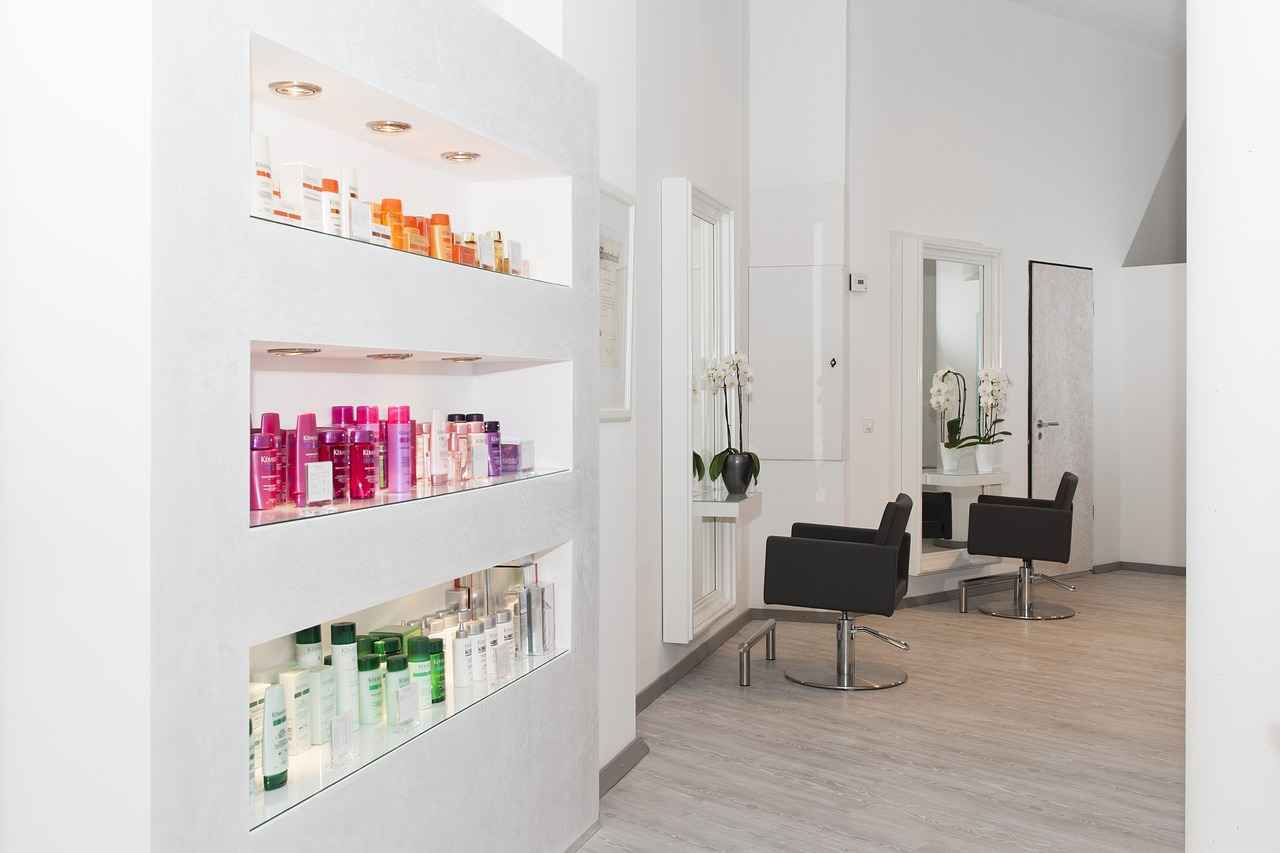This article delves into the timeline for dermal fillers to settle, detailing what patients can expect during the healing process and offering tips for optimal results. Understanding these aspects is vital for anyone considering dermal filler treatments.
What Are Dermal Fillers and How Do They Work?
Dermal fillers are injectable substances that restore volume and smooth out wrinkles. These products, often made from hyaluronic acid or collagen, work by adding volume beneath the skin’s surface, providing a plump and youthful appearance. Their effects are immediate, but the settling process can vary significantly among individuals.
How Long Does It Typically Take for Fillers to Settle?
Generally, most dermal fillers settle within a week. However, some types may require up to two weeks for optimal results. Individual factors such as skin type, age, and lifestyle can also influence this timeline. It is important for patients to have realistic expectations regarding the settling period.
- Immediate Effects Post-Injection: After the procedure, patients often experience swelling and redness, which is normal and usually subsides within a few days.
- Common Side Effects to Expect: Mild bruising and swelling are common side effects. Understanding these can help manage expectations and prepare for the recovery phase.
When to Contact Your Practitioner
If you notice unusual side effects, such as prolonged swelling or severe pain, it is crucial to consult your practitioner immediately. Early intervention can help prevent complications and ensure proper care.
Factors Influencing the Settling Time of Fillers
Several factors can impact how quickly fillers settle, including:
- The type of filler used
- The injection technique employed
- Individual biological responses
Understanding these factors is essential for tailoring expectations accordingly.
What Can You Do to Enhance the Settling Process?
Post-treatment care significantly influences how well fillers settle. Following specific guidelines can help ensure optimal results and minimize complications.
- Post-Treatment Care Guidelines: It is advisable to avoid strenuous activities and excessive sun exposure after treatment. This can aid in the healing process and enhance the filler’s settling.
- Hydration and Nutrition for Optimal Results: Maintaining proper hydration and a balanced diet rich in vitamins can support skin health, aiding in the healing process.
How to Identify When Fillers Have Fully Settled?
Recognizing when fillers have fully settled can be subjective. However, there are signs to look for:
- Visual Changes to Look For: After the fillers settle, patients should notice a more natural appearance, with reduced swelling and a smooth finish.
- Consulting with Your Practitioner for Feedback: Regular check-ins with your practitioner can provide valuable insights into the settling process and help address any concerns.
Ultimately, understanding the settling process of dermal fillers can empower patients to make informed decisions about their treatments. By adhering to post-treatment guidelines and maintaining open communication with practitioners, individuals can achieve the best possible outcomes.

What Are Dermal Fillers and How Do They Work?
Dermal fillers are becoming increasingly popular in the realm of aesthetic treatments, providing individuals with a non-surgical option to enhance their facial features. These injectable substances are designed to restore volume, smooth out wrinkles, and improve overall facial contours. Understanding what dermal fillers are and how they work is essential for anyone considering this treatment.
Dermal fillers are primarily composed of substances that mimic the natural elements found in the skin, such as hyaluronic acid, collagen, and calcium hydroxylapatite. These components play a crucial role in maintaining skin elasticity and hydration. When injected into specific areas of the face, fillers work by adding volume and plumping up the skin, which helps to reduce the appearance of fine lines and wrinkles.
The mechanism of action for dermal fillers is relatively straightforward. Once injected, the filler material integrates into the skin, creating a scaffold that supports the surrounding tissue. This process not only fills in wrinkles but also stimulates the body’s natural collagen production over time, leading to more sustained results. Depending on the type of filler used, the effects can last anywhere from a few months to over a year.
After receiving dermal fillers, patients often wonder about the timeline for the product to fully settle. Generally, most fillers will start to settle within a week, but the final results may take up to two weeks to become apparent. Factors such as the type of filler, the area treated, and individual healing responses can all influence this timeline.
Right after the procedure, it’s common for patients to experience some swelling and redness. These immediate effects are typically mild and should subside within a few days. However, understanding that these reactions are part of the healing process can help alleviate any concerns.
- Bruising: This is a common side effect that may occur at the injection site.
- Swelling: Temporary swelling is expected as the body adjusts to the filler.
- Itching: Some patients may experience mild itching, which usually resolves quickly.
If you notice any unusual side effects, such as prolonged swelling or severe pain, it is crucial to contact your practitioner immediately. Early intervention can help prevent complications and ensure optimal results.
Several factors can influence how quickly fillers settle, including:
- Type of filler: Different fillers have varying compositions and settling times.
- Injection technique: The skill of the practitioner can impact how well the filler integrates into the skin.
- Individual biological responses: Each person’s body reacts differently to fillers, affecting healing times.
Post-treatment care is vital for achieving the best results from dermal fillers. Here are some tips to enhance the settling process:
- Avoid strenuous activities: Refrain from heavy exercise for at least 24 hours post-treatment.
- Limit sun exposure: Protect your skin from the sun to prevent irritation.
- Stay hydrated: Drinking plenty of water can support skin health.
Maintaining a balanced diet rich in vitamins and minerals can also support the healing process. Foods high in antioxidants and healthy fats can promote skin health and enhance the overall results of your treatment.
Recognizing when fillers have fully settled can be subjective, but there are signs to look for. Patients should expect a more natural appearance, with reduced swelling and a smooth finish. Regular check-ins with your practitioner can provide valuable feedback and reassurance during the settling process.

How Long Does It Typically Take for Fillers to Settle?
Understanding the settling time of dermal fillers is crucial for anyone considering this popular cosmetic treatment. Fillers are designed to enhance facial volume and diminish the appearance of wrinkles, but the settling period can vary significantly based on several factors. In this section, we will delve into how long it typically takes for fillers to settle, what patients can expect during this time, and factors that can influence the process.
The settling period for dermal fillers is not a one-size-fits-all scenario. Generally, most fillers begin to settle within a week; however, some types may require a longer duration to achieve optimal results. It is important to understand that individual factors, such as skin type, age, and the specific area treated, can significantly influence this timeline.
- Hyaluronic Acid Fillers: These fillers, commonly used for lip augmentation and cheek enhancement, usually settle within 1 to 2 weeks.
- Calcium Hydroxylapatite Fillers: Typically used for deeper lines and wrinkles, these may take up to 2 weeks to fully settle.
- Poly-L-lactic Acid Fillers: Often used for facial volume restoration, these can take several weeks to show full results, as they stimulate collagen production.
After the initial injection, patients may experience swelling and redness, which are normal reactions as the body adjusts to the filler. These effects can be alarming, but they are usually temporary and should subside within a few days. It’s essential to manage expectations during this time and understand that the filler will continue to integrate into the tissue.
Several factors can impact how quickly fillers settle:
- Type of Filler: Different fillers have varying compositions, leading to different settling times.
- Injection Technique: The skill and technique of the practitioner can affect how the filler disperses and integrates into the skin.
- Individual Biological Response: Each person’s body reacts differently to fillers, influenced by factors such as metabolism and skin health.
Understanding these factors can help patients tailor their expectations and prepare for the settling process. Consulting with a qualified practitioner can provide personalized insights based on individual circumstances.
Post-treatment care is vital for ensuring that fillers settle optimally. Here are some tips:
- Follow Post-Treatment Guidelines: Avoid strenuous activities and excessive sun exposure in the days following your treatment.
- Stay Hydrated: Proper hydration supports skin health and can enhance the healing process.
- Maintain a Balanced Diet: Eating a diet rich in vitamins and nutrients can aid in recovery and improve overall skin condition.
By adhering to these guidelines, patients can not only enhance the settling process but also mitigate the risk of complications.
Recognizing when fillers have fully settled can be subjective, but there are signs to look for:
- Visual Changes: Once settled, the area should appear smooth and natural, with minimal swelling.
- Consult Your Practitioner: Regular follow-ups can provide valuable feedback and reassurance about the settling process.
By understanding the settling timeline and taking proactive steps, patients can feel more confident in their treatment outcomes and enjoy the benefits of their dermal fillers.
Immediate Effects Post-Injection
Following a dermal filler procedure, it is common for patients to experience some swelling and redness in the treated areas. These immediate effects can understandably be alarming for many, especially those new to cosmetic treatments. However, it is important to recognize that these reactions are typically temporary as the body begins to adjust to the filler.
During the first few hours after the injection, the body’s natural response may lead to localized inflammation. This is the body’s way of reacting to the filler material, which can create a sensation of tightness or discomfort. Although these symptoms can be distressing, they are generally a normal part of the healing process.
In most cases, the swelling and redness will start to subside within a few days. However, the exact duration can vary based on several factors, including:
- Type of Filler Used: Different fillers have varying compositions, which can influence the healing response.
- Injection Technique: The skill and technique of the practitioner can impact how the filler integrates with the tissue.
- Individual Response: Each person’s skin and body react differently; some may experience more pronounced effects than others.
To minimize discomfort and facilitate a smoother recovery, patients are encouraged to follow specific post-treatment care guidelines. These may include:
- Avoiding Strenuous Activities: Engaging in heavy exercise can exacerbate swelling.
- Cold Compresses: Applying a cold compress to the treated areas can help reduce swelling and provide relief.
- Staying Hydrated: Adequate hydration supports overall skin health and may aid in the healing process.
While the initial swelling and redness are common, patients should remain vigilant for unusual symptoms. If swelling persists beyond a week or is accompanied by severe pain, it is crucial to contact your practitioner. These could be signs of complications that require professional attention.
In summary, the immediate effects of dermal fillers, such as swelling and redness, are usually temporary and part of the body’s natural adjustment process. By adhering to post-treatment guidelines and maintaining open communication with your practitioner, you can effectively manage these effects and work towards achieving the desired results.
Common Side Effects to Expect
When considering dermal fillers, understanding the common side effects is crucial for managing expectations and ensuring a smooth recovery process. While many patients focus on the aesthetic benefits, it’s equally important to be aware of the mild side effects that can occur post-treatment.
After receiving dermal fillers, patients may experience a variety of side effects. These can range from minor inconveniences to more noticeable reactions. The most frequently reported side effects include:
- Bruising: This can occur at the injection site and is typically a result of the needle puncturing small blood vessels. Bruising usually resolves within a week.
- Swelling: Mild swelling is common and can last for several days. This is your body’s natural response as it adjusts to the filler.
- Redness: Some patients may notice redness around the injection area, which usually subsides shortly after the procedure.
- Pain or Tenderness: A slight discomfort may be felt, but this is generally mild and temporary.
Understanding the reasons behind these side effects can help patients better manage their expectations. The injection process itself can cause trauma to the skin, leading to bruising and swelling. Additionally, the filler material may cause a temporary inflammatory response as the body recognizes it as a foreign substance.
Being prepared for these side effects can greatly enhance the recovery experience. Here are some practical tips:
- Ice the Area: Applying ice packs can help reduce swelling and numb the area, minimizing discomfort.
- Avoid Strenuous Activities: Refrain from heavy exercise for at least 24 hours post-treatment to reduce the risk of increased swelling.
- Stay Hydrated: Drinking plenty of water can help your body heal faster and reduce the intensity of side effects.
- Follow Your Practitioner’s Advice: Adhering to post-treatment guidelines provided by your practitioner is essential for optimal recovery.
While mild side effects are normal, it’s important to monitor your symptoms. If you experience prolonged swelling, severe pain, or any unusual reactions, it’s crucial to contact your practitioner. These could be signs of complications that require immediate attention.
In summary, while mild side effects such as bruising and swelling are common after dermal filler treatments, understanding and managing these reactions can significantly improve the recovery experience. By being informed and following best practices, patients can enhance their results and enjoy the benefits of their treatment with confidence.
When to Contact Your Practitioner
When considering dermal fillers, it’s crucial to understand not only the expected outcomes but also the potential side effects that may arise during the healing process. While most individuals experience mild discomfort or temporary swelling, there are instances where unusual side effects may occur. This section provides essential insights into when to contact your practitioner following a filler treatment.
After receiving dermal fillers, it’s typical to encounter some level of swelling, bruising, or redness. These effects usually subside within a few days as the body adjusts to the injected substance. However, it’s vital to distinguish between normal and abnormal reactions.
- Prolonged Swelling: If swelling persists beyond a week, it may indicate an adverse reaction.
- Severe Pain: While mild discomfort is expected, any severe pain that worsens over time should be addressed immediately.
- Discoloration: Unusual skin discoloration or patches could signal complications that require professional evaluation.
- Infection Symptoms: Signs of infection, such as fever, increased redness, or warmth around the injection site, necessitate urgent care.
If you experience any of the above symptoms or have concerns about your recovery, it’s crucial to consult your practitioner immediately. Early intervention can prevent complications and ensure that you receive the proper care needed for your unique situation. Practitioners are equipped to assess your condition and determine the best course of action, whether that involves additional treatment or reassurance.
During your follow-up appointment, your practitioner will likely:
- Conduct a thorough examination of the injection sites.
- Discuss your symptoms in detail to understand the context of your concerns.
- Provide guidance on further care or adjustments to your treatment plan.
It’s natural to feel anxious after a cosmetic procedure, especially when unexpected symptoms arise. Remember that your practitioner is there to support you. Maintaining open communication about your experiences can alleviate worry and lead to better outcomes.
In summary, while dermal fillers are generally safe and effective, being aware of potential side effects and knowing when to contact your practitioner is essential. If you encounter any unusual symptoms, don’t hesitate to reach out for professional advice. Your health and satisfaction should always come first.
Factors Influencing the Settling Time of Fillers
Understanding the factors that influence how quickly dermal fillers settle is crucial for anyone considering this popular cosmetic treatment. The settling time can vary significantly based on a variety of elements, and being informed can help set realistic expectations.
Several factors play a pivotal role in determining how long it takes for fillers to settle after injection. These include:
- Type of Filler: Different fillers have varying consistencies and compositions. For instance, hyaluronic acid fillers tend to integrate into the skin more quickly than thicker, volumizing fillers.
- Injection Technique: The method used by the practitioner can impact how evenly the filler distributes under the skin. Techniques such as microcannula or needle injections may yield different settling times.
- Individual Biological Responses: Each person’s body reacts differently to fillers. Factors such as skin type, age, and overall health can influence how quickly the body absorbs and settles the filler.
Knowing the expected settling time can help patients manage their expectations and avoid unnecessary concerns. For instance, swelling and redness are common immediately after the procedure, but these symptoms usually subside within a few days. Understanding that the final results may take up to two weeks to fully materialize can provide peace of mind.
The injection technique is critical in determining how well the filler integrates into the skin. A skilled practitioner will not only know how to place the filler but also how to manipulate it to achieve the desired look. For example, a technique that involves layering the filler can lead to a more gradual settling process, allowing for a more natural appearance.
Each individual’s biological makeup plays a significant role in how fillers settle. Factors such as:
- Skin Elasticity: Younger skin tends to have more elasticity, which can allow fillers to settle more smoothly.
- Health Conditions: Certain health issues, such as autoimmune disorders, can affect how the body responds to fillers.
- Hydration Levels: Well-hydrated skin can help fillers settle better and achieve a more natural look.
To enhance the settling process, patients should follow specific post-treatment care guidelines:
- Avoid Strenuous Activities: Engaging in heavy exercise can increase blood flow and swelling, delaying the settling process.
- Stay Hydrated: Drinking plenty of water supports skin health and can help the filler integrate better.
- Follow Practitioner Guidelines: Adhering to the aftercare instructions provided by the practitioner is vital for optimal results.
If you experience prolonged swelling, unusual pain, or any other concerning symptoms, it is crucial to reach out to your practitioner. Early intervention can help address potential complications and ensure a smoother recovery.
In summary, understanding the various factors influencing the settling time of fillers can significantly enhance the overall experience and results of the treatment. By being informed and following proper aftercare, patients can achieve the best possible outcomes.

What Can You Do to Enhance the Settling Process?
After receiving dermal fillers, post-treatment care is crucial for achieving the best possible results. How you care for your skin and body following the procedure can significantly influence how well the fillers settle. Here are some essential guidelines and tips to enhance the settling process and ensure optimal outcomes.
Understanding the significance of post-treatment care is key. When fillers are injected, they need time to integrate with your skin tissue. Proper care can minimize complications and enhance the final appearance. The following practices are recommended:
- Avoid Strenuous Activities: For at least 24-48 hours post-treatment, refrain from intense workouts and activities that cause excessive sweating. This helps reduce swelling and allows the fillers to settle properly.
- Stay Hydrated: Drinking plenty of water supports skin health and can aid in the healing process. Hydration helps maintain skin elasticity, which is essential for the fillers to blend seamlessly.
- Limit Sun Exposure: Protect your skin from direct sunlight for a few days after treatment. UV rays can cause inflammation and affect the settling process. If you must be outside, use a high-SPF sunscreen.
- Avoid Alcohol and Blood Thinners: Alcohol can increase swelling and bruising, while blood thinners can lead to excessive bleeding. It’s advisable to avoid these substances for at least 24 hours.
What you eat can also impact how well fillers settle. A balanced diet rich in vitamins and minerals supports skin health. Focus on:
- Vitamin C: Found in citrus fruits, strawberries, and bell peppers, vitamin C promotes collagen production and aids in skin repair.
- Omega-3 Fatty Acids: Foods like salmon, walnuts, and flaxseeds can reduce inflammation and promote healthy skin.
- Antioxidants: Incorporate berries, green tea, and dark chocolate to help combat oxidative stress and support skin recovery.
Minor side effects such as swelling and bruising are common after filler injections. To manage these effectively:
- Apply Cold Compresses: Gently applying a cold pack can help reduce swelling and soothe the area.
- Follow Your Practitioner’s Advice: If your practitioner provides specific instructions, be sure to follow them closely for the best results.
If you experience prolonged swelling, severe pain, or any unusual symptoms, it’s essential to contact your practitioner immediately. Early intervention can prevent complications and ensure that any issues are addressed promptly.
As the fillers settle, take note of the changes in your appearance. It can take a few days to weeks for the final results to become apparent. Regular follow-ups with your practitioner can provide reassurance and help you understand the settling process better.
In summary, post-treatment care plays a vital role in enhancing the settling process of dermal fillers. By following these guidelines, you can optimize your results and enjoy the benefits of your treatment for a longer duration.
Post-Treatment Care Guidelines
After receiving dermal fillers, it’s crucial to follow to ensure optimal results and a smooth healing process. These guidelines not only help in enhancing the settling of the fillers but also minimize potential side effects. Here are some essential practices to consider:
- Avoid Strenuous Activities: For at least 24 to 48 hours post-treatment, it is advisable to refrain from engaging in strenuous activities such as heavy exercise or intense workouts. Physical exertion can increase blood flow and lead to swelling or bruising at the injection sites.
- Limit Sun Exposure: Sun exposure can adversely affect the healing process. It is recommended to avoid direct sunlight and tanning beds for at least a week. If you must be outdoors, use a broad-spectrum sunscreen with a high SPF to protect your skin.
- Stay Hydrated: Proper hydration is vital for skin health. Drinking plenty of water helps maintain skin elasticity and supports the healing process. Aim for at least 8 glasses of water a day to keep your skin plump and hydrated.
- Avoid Alcohol and Smoking: Both alcohol and smoking can impede the healing process. It is best to avoid these substances for at least 48 hours post-treatment. Alcohol can cause dehydration and inflammation, while smoking reduces blood flow to the skin.
- Gentle Cleansing: For the first few days following your treatment, use a gentle cleanser to wash your face. Avoid exfoliating scrubs or harsh chemicals that could irritate the skin.
- Follow-Up Appointments: Schedule follow-up appointments with your practitioner to monitor the healing process. Regular check-ins can help address any concerns and ensure that the fillers are settling as expected.
Adhering to these can significantly influence the effectiveness of your filler treatment. By taking the necessary precautions, you can enhance the results and enjoy a smoother, more youthful appearance. It is important to listen to your body and consult your practitioner if you experience any unusual symptoms or prolonged side effects.
In addition to these guidelines, consider incorporating a nutrient-rich diet to support your skin’s healing. Foods high in vitamins C and E, along with antioxidants, can promote skin health and improve the overall results of your filler treatment. Remember, the key to achieving the best outcomes lies in both the treatment itself and the care you provide afterwards.
Hydration and Nutrition for Optimal Results
When it comes to enhancing your skin’s appearance through dermal fillers, hydration and nutrition play a pivotal role. These two elements can significantly influence the healing process and the overall effectiveness of the treatment. Understanding how to maintain proper hydration and a balanced diet can lead to improved outcomes following filler treatments.
Proper hydration is essential for maintaining skin elasticity and suppleness. When the body is well-hydrated, skin cells function optimally, allowing for better absorption of nutrients and quicker healing post-treatment. Dehydration can lead to dry, flaky skin, which may not only affect the appearance of fillers but also prolong recovery time.
A balanced diet rich in vitamins and minerals is crucial for skin health. Nutrients like vitamin C, vitamin E, and zinc are known for their roles in collagen production and skin repair. Incorporating foods such as:
- Leafy greens (rich in vitamins A and C)
- Fruits, especially berries (high in antioxidants)
- Nuts and seeds (sources of healthy fats and vitamin E)
- Fish (rich in omega-3 fatty acids)
can enhance the skin’s healing process and improve the results of filler treatments.
Just as certain foods can promote skin health, others can hinder it. It’s advisable to limit:
- Processed foods high in sugars and unhealthy fats
- Excessive salt, which can lead to water retention and puffiness
- Alcohol, which can dehydrate the skin
By avoiding these, you can help ensure that your skin maintains a healthy and vibrant appearance post-treatment.
While individual hydration needs can vary, a common guideline is to aim for at least 8-10 glasses of water per day. This can help flush out toxins and keep your skin looking fresh and rejuvenated. Additionally, consider incorporating hydrating foods like cucumbers and watermelon into your diet.
For optimal results, it’s essential to combine good hydration practices with a nutrient-rich diet. This holistic approach not only supports skin health but also enhances the overall effectiveness of dermal fillers. Remember, the body needs time to heal, and providing it with the right resources can make a significant difference.
Before making any significant changes to your diet or hydration habits, it’s advisable to consult with a healthcare provider or a nutritionist. They can offer personalized recommendations based on your specific needs and treatment goals.
In conclusion, maintaining proper hydration and nutrition is vital for enhancing the results of dermal fillers. By prioritizing these aspects, you can support your skin’s healing process and achieve the best possible outcomes from your treatment.

How to Identify When Fillers Have Fully Settled?
Understanding when dermal fillers have fully settled is crucial for patients seeking aesthetic enhancements. The settling process can vary from person to person, making it essential to recognize the signs that indicate the fillers have reached their optimal state. This article will delve into the factors influencing the settling time and provide practical tips for identifying when your fillers have fully settled.
Patients often wonder, how can I tell if my fillers have settled completely? The answer lies in observing a few key signs:
- Reduction in Swelling: After the initial injection, some swelling is expected. When the swelling subsides, it usually indicates that the filler is beginning to settle.
- Smoother Texture: Once settled, the treated area should feel smooth to the touch, without any lumps or irregularities.
- Natural Appearance: Fillers that have settled will blend seamlessly with your natural features, providing a youthful and refreshed look.
The timeframe for fillers to settle can vary significantly. Typically, most fillers take about one to two weeks to fully settle, but this can depend on various factors including:
- Type of Filler: Different fillers have different settling times. For example, hyaluronic acid fillers may settle faster than collagen-based fillers.
- Injection Technique: The method used by the practitioner can influence how quickly the filler integrates with the tissue.
- Individual Factors: Each person’s body responds differently to fillers based on skin type, age, and overall health.
During the settling process, it’s common to experience minor side effects such as bruising or tenderness. Understanding these can help manage expectations:
- Temporary Discomfort: Mild pain or discomfort at the injection site is normal and should subside within a few days.
- Possible Asymmetry: Initially, one side may appear different from the other. This is often temporary as the filler settles and swelling decreases.
Regular follow-ups with your practitioner can provide reassurance during the settling phase. They can offer expert insights on:
- What to Expect: Your practitioner can explain the typical timeline for your specific filler and what signs to look for.
- Addressing Concerns: If you notice anything unusual, such as prolonged swelling or discomfort, your practitioner can assess the situation and provide guidance.
To promote optimal settling of your fillers, consider the following tips:
- Stay Hydrated: Drinking plenty of water helps maintain skin elasticity and overall health.
- Avoid Strenuous Activities: For the first few days post-treatment, limit physical exertion to allow your body to heal.
- Follow Aftercare Instructions: Adhering to your practitioner’s aftercare advice is crucial for achieving the best results.
In summary, recognizing when fillers have fully settled can be subjective, but by understanding the signs and maintaining communication with your practitioner, you can gauge the effectiveness of your treatment. Remember that patience is key, as the best results often take time to reveal themselves.
Visual Changes to Look For
Understanding the visual changes that occur after dermal fillers have settled is crucial for patients seeking aesthetic enhancements. The settling process is a key indicator of the treatment’s success, and recognizing these changes can help individuals feel more confident about their results.
Once the fillers have had sufficient time to settle, patients can anticipate a range of positive visual transformations. Initially, the area may appear slightly swollen or puffy due to the injection process. However, as the swelling subsides, several notable changes become evident:
- Natural Appearance: One of the primary goals of dermal fillers is to achieve a look that appears natural. After the settling period, the fillers integrate with the skin tissue, resulting in a more harmonious and balanced appearance.
- Smooth Finish: The texture of the skin improves significantly. Patients will notice that the treated areas feel smoother and more refined, reducing the visibility of wrinkles and fine lines.
- Enhanced Volume: Fillers are designed to restore lost volume. Once settled, patients will see a rejuvenated look, particularly in areas like the cheeks, lips, and under the eyes, where volume loss is common.
- Improved Contours: Fillers can help redefine facial contours, giving a more youthful appearance. After settling, the enhanced contours become more pronounced and aesthetically pleasing.
The timeline for these visual changes varies among individuals. Generally, most patients will start to notice significant improvements within a few days to a week post-treatment. However, it can take up to two weeks for the fillers to fully settle and reveal their true effects.
Patients can look for specific signs to confirm that their fillers have settled successfully:
- Reduced Swelling: A noticeable decrease in swelling indicates that the body is adjusting well to the filler.
- Consistent Texture: The treated area should feel even and smooth, with no lumps or irregularities.
- Natural Movement: The fillers should move naturally with facial expressions, avoiding a frozen or overdone appearance.
Regular follow-ups with your practitioner can be invaluable. They can provide professional insights into the settling process and help you understand what to expect during recovery. If you have any concerns about the results, don’t hesitate to reach out to your provider.
While most patients experience a smooth settling process, some may encounter unexpected reactions. If you notice prolonged swelling, pain, or any unusual changes, it is essential to contact your practitioner immediately. Early intervention can help address any complications effectively.
In summary, observing the visual changes after dermal fillers have settled can confirm the success of your treatment. With a natural appearance, smooth finish, and enhanced volume, you can enjoy the benefits of your aesthetic enhancements. Remember to maintain open communication with your practitioner throughout the process for optimal results.
Consulting with Your Practitioner for Feedback
When considering dermal fillers, one of the most critical aspects of the treatment process is the ongoing relationship between the patient and their practitioner. Regular consultations are not just a formality; they serve as a vital component in ensuring that patients achieve the best possible outcomes from their treatments. These check-ins allow practitioners to monitor the settling process of the fillers and address any concerns that may arise during the healing phase.
During each visit, practitioners can provide valuable insights into how the fillers are integrating with the skin and what changes to expect over time. This is particularly important as the settling period can vary significantly among individuals, depending on various factors such as skin type, the specific filler used, and the injection technique. Patients may experience initial swelling or unevenness, which can be concerning; however, regular feedback from a qualified practitioner can help alleviate these worries.
Furthermore, these consultations serve as an opportunity for patients to express any concerns or questions they might have. Whether it’s about the appearance of the fillers, potential side effects, or the overall healing process, open communication is essential. Engaging in dialogue with a practitioner can lead to tailored advice that enhances the patient’s experience and results. Practitioners can also recommend specific post-treatment care practices that can further support the settling process.
It’s important for patients to understand that the settling of fillers is a gradual process. While many fillers may appear to settle within a week, achieving the final desired look can take longer. Regular check-ins allow practitioners to assess whether the fillers are settling as expected or if adjustments need to be made. This proactive approach can help in identifying any potential complications early on, ensuring that patients receive the appropriate care.
Additionally, practitioners often utilize these consultations to educate patients about the signs of successful settling. Understanding what a natural appearance looks like post-treatment can empower patients and help them feel more confident in their results. This knowledge can also reduce anxiety during the initial healing phase, which is often marked by swelling and minor discomfort.
In summary, consulting with your practitioner for feedback is a fundamental part of the filler treatment journey. These regular check-ins not only provide crucial insights into the settling process but also foster a sense of trust and confidence in the treatment. Patients who maintain open lines of communication with their practitioners are more likely to achieve satisfying results and feel supported throughout their healing journey.
Frequently Asked Questions
- How long does it take for fillers to fully settle?
Generally, most fillers settle within a week, but some may take longer depending on the type of filler and individual factors. It’s important to be patient and allow your body to adjust.
- What immediate effects should I expect after the injection?
Right after the procedure, you might notice some swelling and redness. Don’t worry, these effects are typically temporary as your body starts to adapt to the filler.
- Are there any common side effects I should be aware of?
Yes, mild side effects like bruising and swelling are quite common. Understanding these can help you manage your expectations and prepare for the recovery phase.
- When should I contact my practitioner?
If you experience unusual side effects, such as prolonged swelling or pain, it’s essential to reach out to your practitioner right away to ensure everything is okay.
- What can I do to enhance the settling process?
Following post-treatment care guidelines, like avoiding strenuous activities and excessive sun exposure, can significantly aid in the healing process and improve the settling of your fillers.
- How can I tell when my fillers have fully settled?
Look for signs like reduced swelling and a smooth finish. Once you notice these visual changes, it’s a good indication that your fillers have settled well.




